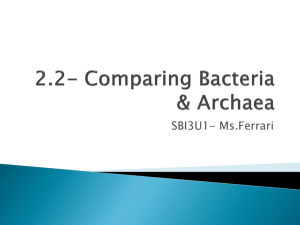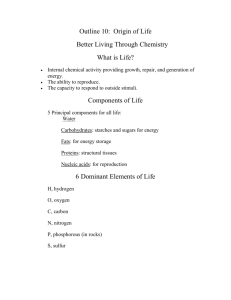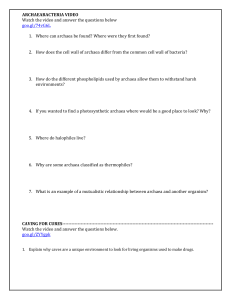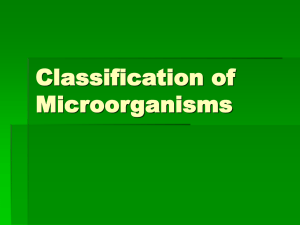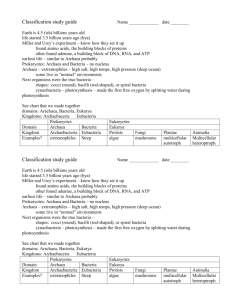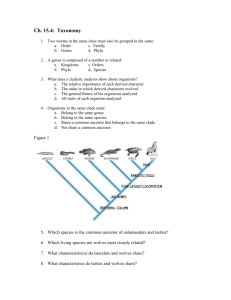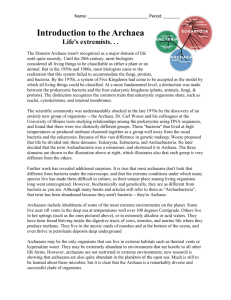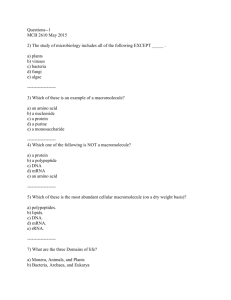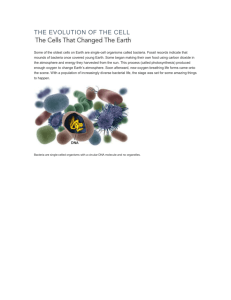Chapter 4 Answers to Even Numbered Study Questions
advertisement
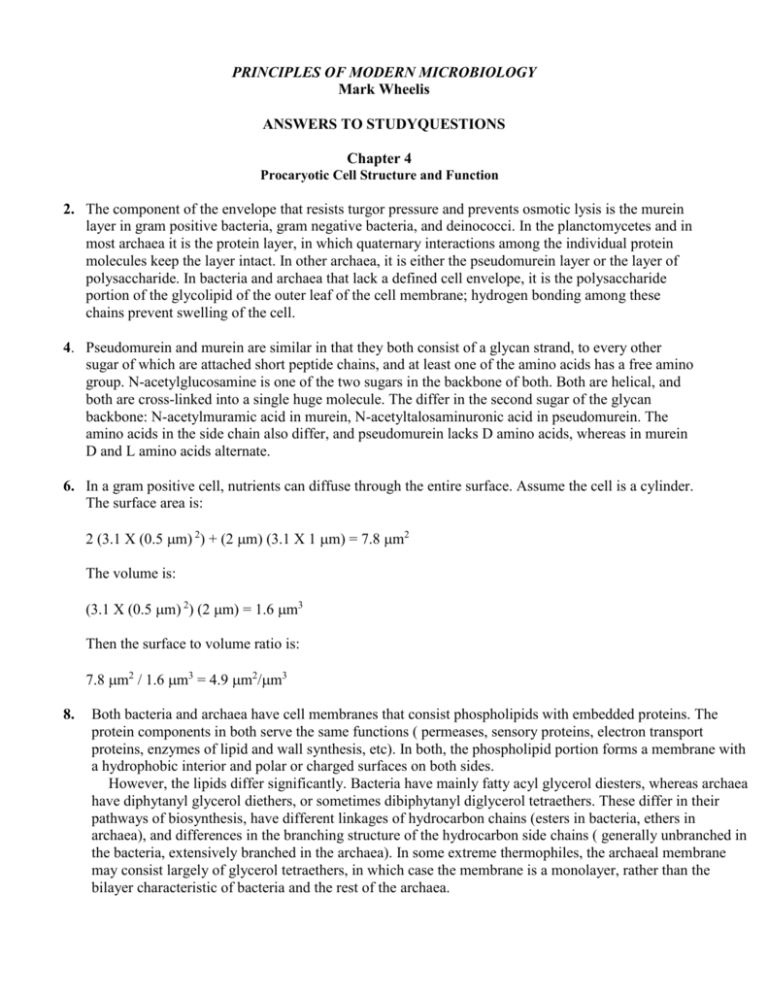
PRINCIPLES OF MODERN MICROBIOLOGY Mark Wheelis ANSWERS TO STUDYQUESTIONS Chapter 4 Procaryotic Cell Structure and Function 2. The component of the envelope that resists turgor pressure and prevents osmotic lysis is the murein layer in gram positive bacteria, gram negative bacteria, and deinococci. In the planctomycetes and in most archaea it is the protein layer, in which quaternary interactions among the individual protein molecules keep the layer intact. In other archaea, it is either the pseudomurein layer or the layer of polysaccharide. In bacteria and archaea that lack a defined cell envelope, it is the polysaccharide portion of the glycolipid of the outer leaf of the cell membrane; hydrogen bonding among these chains prevent swelling of the cell. 4. Pseudomurein and murein are similar in that they both consist of a glycan strand, to every other sugar of which are attached short peptide chains, and at least one of the amino acids has a free amino group. N-acetylglucosamine is one of the two sugars in the backbone of both. Both are helical, and both are cross-linked into a single huge molecule. The differ in the second sugar of the glycan backbone: N-acetylmuramic acid in murein, N-acetyltalosaminuronic acid in pseudomurein. The amino acids in the side chain also differ, and pseudomurein lacks D amino acids, whereas in murein D and L amino acids alternate. 6. In a gram positive cell, nutrients can diffuse through the entire surface. Assume the cell is a cylinder. The surface area is: 2 (3.1 X (0.5 m) 2) + (2 m) (3.1 X 1 m) = 7.8 m2 The volume is: (3.1 X (0.5 m) 2) (2 m) = 1.6 m3 Then the surface to volume ratio is: 7.8 m2 / 1.6 m3 = 4.9 m2/m3 8. Both bacteria and archaea have cell membranes that consist phospholipids with embedded proteins. The protein components in both serve the same functions ( permeases, sensory proteins, electron transport proteins, enzymes of lipid and wall synthesis, etc). In both, the phospholipid portion forms a membrane with a hydrophobic interior and polar or charged surfaces on both sides. However, the lipids differ significantly. Bacteria have mainly fatty acyl glycerol diesters, whereas archaea have diphytanyl glycerol diethers, or sometimes dibiphytanyl diglycerol tetraethers. These differ in their pathways of biosynthesis, have different linkages of hydrocarbon chains (esters in bacteria, ethers in archaea), and differences in the branching structure of the hydrocarbon side chains ( generally unbranched in the bacteria, extensively branched in the archaea). In some extreme thermophiles, the archaeal membrane may consist largely of glycerol tetraethers, in which case the membrane is a monolayer, rather than the bilayer characteristic of bacteria and the rest of the archaea. 10. Flagellar motility is a form of swimming through liquid. It is mediated by the rotation of flagella, driven by the entry of ions through the flagellar basal body. Since the flagellar filament is a relatively rigid helix, rotation exerts force on the medium, leading to movement. Gliding motility, in contrast, occurs on solid surfaces, and is mediated either by the extension and retraction of pili from the leading end of the cell, or by the extrusion of polysaccharide from the rear end.
